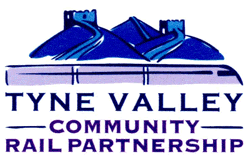
A little bit of history ..... Do you know that during the 1790's there had been a plan to construct a canal between Newcastle, Carlisle and Maryport? Canals were being built throughout the country in the 1700's providng a more effective means of transporting goods, such as coal, textiles, pottery.
A scheme, developed by William Chapman and published in 1795, was presented to Parliament in 1797 but was withdrawn after opposition. A canal scheme was subsequently approved and opened in March 1823 linking Carlisle with the Solway Firth.
After the opening of this section of canal William Chapman was asked to look at options for Newcastle to Carlisle. On 8 June 1824, he wrote "it is now more economic to build a railway".
An important milestone for the railway we have today.
On 9 April 1825, the first meeting of the Newcastle and Carlisle Railway Company was held. James Losh was appointed chairman. The initial task for the company was to raise funds so that the route could be surveyed. By May 1825, £251000 had been pledged (about £20 million today).
It took almost 40 years to complete the railway as we know it today. Opened in sections, the final section to be opened was into Carlisle's Citadel Station.
Along with other rail o rganisations throughout the country, we are celebrating 200 years of railways as well as the innovation of people associated with the area who contributed so much to rail travel today. Read more what we are doing and how you can join in:
rganisations throughout the country, we are celebrating 200 years of railways as well as the innovation of people associated with the area who contributed so much to rail travel today. Read more what we are doing and how you can join in:
A Human Sundial at Haltwhistle
A human sundial has been installed on the forecourt of the railway station at Haltwhistle. You may ask, why? Before the advent of railways, villages, towns and cities used their own local time but as railways were expanded throughout the country, railways companies realised there was a need for a standard time. Learn more in the image below.
sundial has been installed on the forecourt of the railway station at Haltwhistle. You may ask, why? Before the advent of railways, villages, towns and cities used their own local time but as railways were expanded throughout the country, railways companies realised there was a need for a standard time. Learn more in the image below.

A SONG FOR EDMONDSON
Music and song has been at the heart of one of our Railway 200 projects. Read more here about how we worked with songwriters, schoolchildren from Hallbankgate Village School and Lanercost CoE Primary School to create new songs using the railway heritage associated with Brampton Station.
 The schools were presented with displays about the project and an information board featuring some of the songs is now on display at Brampton Station. Learn more here.
The schools were presented with displays about the project and an information board featuring some of the songs is now on display at Brampton Station. Learn more here.
fireside chats
We have hosted a series of talks featuring railway-themed topics in the Old Booking Hall at Haltwhistle throughout 2025, which have proved popular and very informative.. Tickets for these events included a meal served in the 1861Water Tower. Details of the next event will be available on the website and on our social media.

